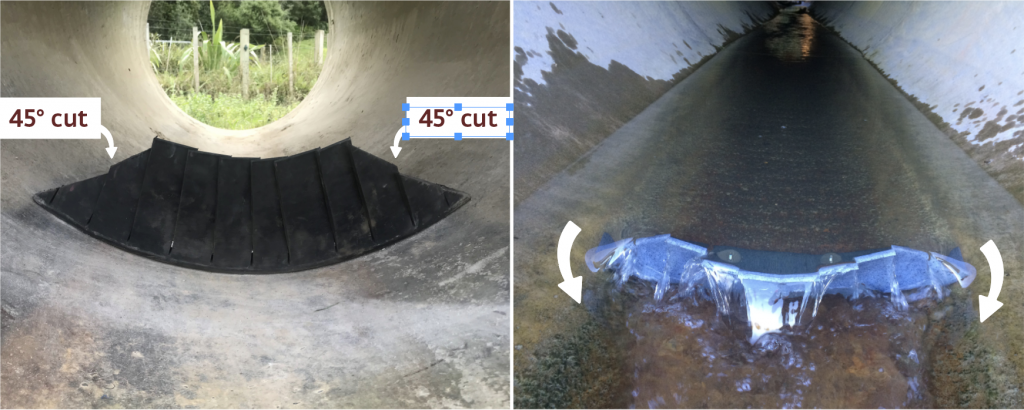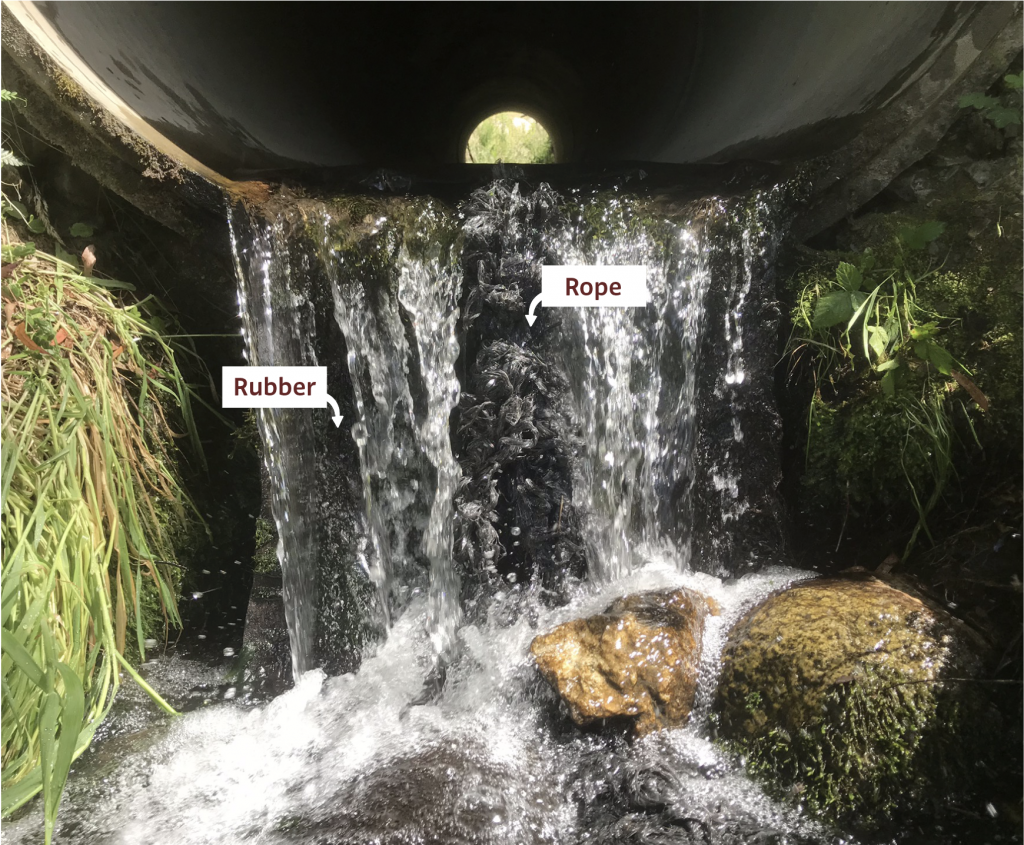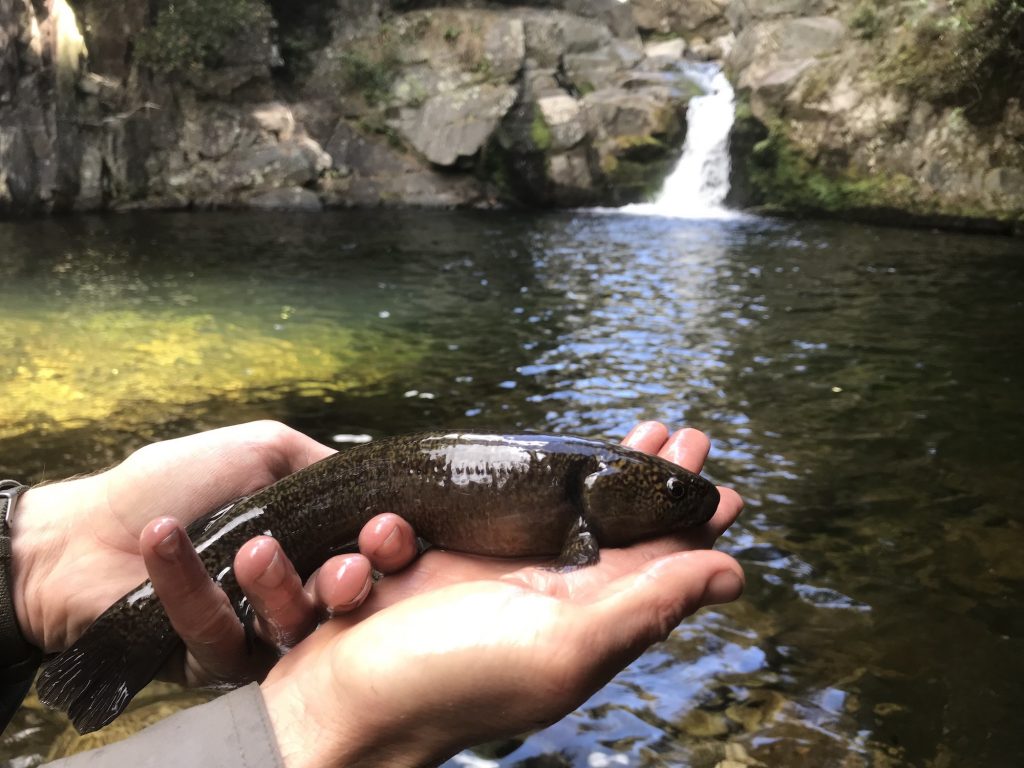Aotearoa New Zealand has more than 50 native freshwater fish species. Around 70 per cent of these are threatened. Many of these fish access different habitats during their lifecycles. Some species, such as inanga (one of the whitebait species), are migratory. They move between fresh and sea water environments to complete their lifecycles. Other species spend their entire life in freshwater. Fish are found in a variety of freshwater habitats. For example, giant kōkopu and īnanga tend to be found in lowland rivers, streams and wetlands, whereas kōaro live in high, mountainous, bouldery streams.
Many instream structures e.g. culverts across New Zealand are blocking fish migration and impacting our freshwater fish species. Nelson Forests has been collaborating with Fish & Wildlife Services to help ensure that fish can travel through streams in the Nelson Forests estate.
“Nelson Forests’ commitment to improving fish passage at their structures aims to reconnect waterways and provide all habitats necessary for our freshwater species to complete their lifecycle,” says Tim Olley, Field Ecologist for Fish & Wildlife Services. “This is an important piece of the puzzle for helping conserve our native fish.”

Removing obstacles
Stream crossings have been added in the Nelson Forests estate over many years, some dating back to the days of the Forest Service. The crossings were put in place to allow access across rivers and streams to various parts of the estate for tree planting, forest management and tree harvesting activities. The natural migratory process of fish can be seriously impeded by poorly constructed and maintained stream crossings.
Smooth concrete culverts can create something akin to a hydroslide, because of the way that they focus and intensify water flow, which fish can find impossible to swim through. Other structures, such as battery culvert fords, can become perched (raised above the level of the stream bed) as the stream bed downstream of the structure is eroded with time. These are significant, but not irreversible, barriers to many of Aotearoa New Zealand’s native fish.
To solve the problem, Fish & Wildlife Services retrofit fish ramps, baffles and ropes to existing stream crossings that are an issue for fish passage.
Heather Arnold, Environmental Planner for Nelson Forests has spearheaded the project to ensure unimpeded fish passage in streams in the company’s forest estate since 2017. The first task was to locate and map out stream crossings based on GIS (Geographic Information Systems) information. Each crossing then had to be validated, with photographs taken of it and a range of data collected and collated in order to pinpoint crossings that posed a barrier to fish passage, had blockages, or could be at risk of becoming blocked, as well as those that provided good passage for fish.
“It was a big project to start with,” says Heather, “just to identify where all the crossings were in our fish-bearing streams, that we were aware of, because they weren’t in our GIS system. Some culverts were blocked and if they were in disused roads, access was challenging.”
Heather utilised the skills of students taking part in Nelson Forests’ scholarship scheme. “They used the plan I had put together to go and physically find all the structures,” says Heather. “They couldn’t get to some of them as they were well overgrown. In those cases I would go and cut the gorse back myself.”
Interestingly the work led to one of the students, Georgie Holdaway, using the project as the basis for her Honours dissertation in Forestry Engineering at the University of Canterbury.
Once the data collection phase of the project was complete, Heather worked with Tim Olley to come up with a work programme and to implement solutions that would allow fish to move both upstream and downstream.

Retrofitting
In the process, Heather says she’s learnt a great deal about native fish species. “Little is known about so many of them. I had no idea, for example, that kōaro can ‘climb’ up waterfalls and can grow up to 28cm in length! That’s impressive!”
“When migrating upstream, kōaro often encounter a number of obstacles along the way, including natural features such as waterfalls,” explains Tim Olley. “Typically, kōaro will leave the main, faster flow and climb the margins of waterfalls, otherwise known as ‘splash zones’ or ‘wetted margins’ using their streamlined body shape and large pectoral and pelvic fins.”
Initially Nelson Forests’ fish passage work was prompted by the Tasman District Council’s Resource Management Plan, which required that any culverts or water courses must provide for fish passage and that any such structures that pre-dated when the plan became operative, needed to be retrofitted to provide fish passage by 8 March 2019. However, without further prompting from councils, Nelson Forests has extended the project to include its forest estate within the areas regulated by Nelson City Council and Marlborough District Council.
The project definitely illustrates how forestry practices have changed over the years, says Heather. It’s also provided an opportunity to build relationships between Nelson Forests and council staff.
“We’re hoping to include a fish passage topic in field days that we host for council staff to showcase the practical challenges and limitations we face when doing this work, and also so we can work closely with councils to fully understand the regulatory framework that applies and make sure we’re complying with it. It also helps when people meet us so that when they call us, they already know the person they’re dealing with.”
Expanding the project
Work in the Tasman district was completed in 2018, with work in the forest estate in the Nelson City Council area completed in 2019.
“The Nelson City Council funded the assessment work with Nelson Forests funding the retrofitting work done by Tim,” says Heather. “Next year we will be rolling out the project into the area between the Rai Saddle and Havelock and then in 2021 we will roll it out to the rest of our forest estate in Marlborough.
“It’s fantastic that we’re able to do this project and to extend its scope. Tim has been seeing native fish in the waterways while he’s doing his work so we know that we are helping the freshwater fish to get the whole way through a catchment and complete their lifecycles.”
“We encountered some fish downstream of some structures we were working at, including longfin eel, dwarf galaxiid, and upland bully,” says Tim. “No introduced fish species were seen. We are constantly surprised by the areas where we are finding fish. All waterways, no matter how big or small, need protecting to ensure our fish species can thrive.”

